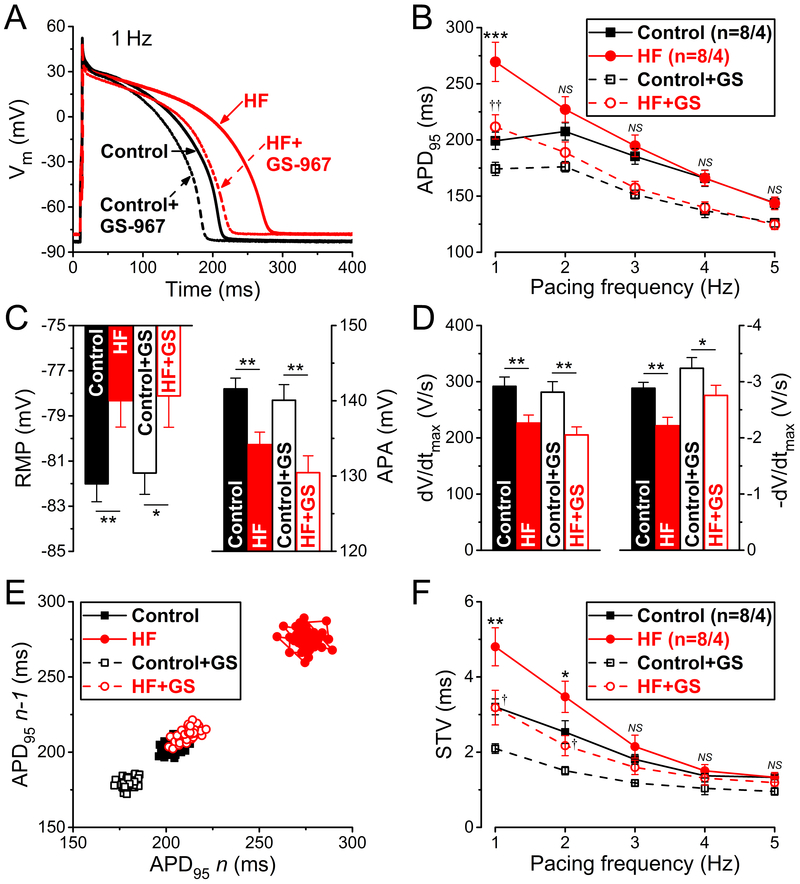Figure 1.
Frequency-dependent effects of late Na+ current inhibition on action potential (AP) in heart failure (HF). A Representative APs recorded at 1 Hz steady-state pacing in HF and age-matched control before and after treatment with the selective late Na+ current inhibitor GS-967 (1 µmol/L). B Frequency-dependence of AP duration measured at 95% of repolarization (APD95). C Resting membrane potential (RMP) was slightly more positive in HF in line with decreased AP amplitude (APA) at 1 Hz pacing. GS-967 (GS) had no effect on either AP parameters. D Maximal rate of rise (dV/dtmax) and maximal rate of phase 3 repolarization (–dV/dtmax) were significantly decreased in HF compared to control. GS increased –dV/dtmax already in control but even more in HF. E Representative Poincare plots of 50 consecutive APD95 values at 1 Hz pacing. F Frequency-dependent short-term variability of APD95 (STV). STV was increased at low pacing frequencies in HF, which was decreased with GS to the control level. Columns and bars represent mean±SEM. n refers to cells/animals measured in each group. Paired and unpaired Student’s t tests following analysis of variance (ANOVA). *P<0.05, **P<0.01, ***P<0.001 versus control; †P<0.05, ††P<0.01 versus control+GS-967.

